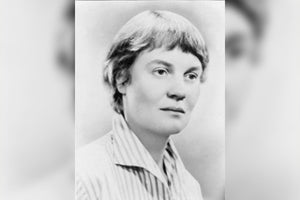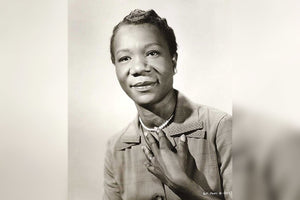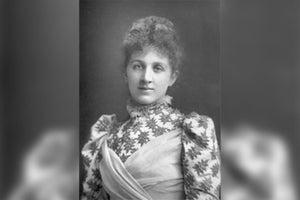Birthday- July 28, 1866
Who is Beatrix Potter?
Beatrix Potter is a conservationist, natural scientist, illustrator, and English writer. She is known for writing children’s books featuring animals. Her most famous work to this day is The Tale of Peter Rabbit.
Five Facts about Beatrix Potter
- Beatrix Potter’s first real name is Helen.
- The story of The Tale of Peter Rabbit was based on Potter’s own pets.
- The house of Beatrix Potter housed a collection of live wild animals.
- Beatrix Potter was fond of writing in codes.
- Beatrix Potter’s parents were not supportive of her choice of husband.
-
Inspirational Quotes from Edith Cowan
“We cannot stay home all our lives, we must present ourselves to the world, and we must look upon it as an adventure.”
“With opportunity, the world is very interesting.”
“There is something delicious about writing those first few words of a story. You can never quite tell where they will take you. Mine took me here, where I belong.”
Beatrix Potter Biography
Early Life
Beatrix Potter was born Helen Beatrix Potter on July 28, 1866, to parents Rupert William Potter and Helen Leech. She grew up in an upper-middle-class household and lived a fairly comfortable life with her parents and a younger brother named Walter Bertram.
Potter’s parents were highly educated and from prominent families. Her father studied at Manchester College under the unitarian philosopher James Martineau. He practiced equity law and conveyancing. Meanwhile, her mother was the daughter of John Leech, who was a rich shipbuilder and cotton merchant.
Both of Potter’s parents had talents in art. Her father was particularly interested in photography. Aside from that, her parents were also very interested in nature and often took the family on trips to the countryside. This had a huge impact on her interest in writing and illustration.
3 reliable governesses educated her. Her last governess was Annie Moore, who was only 3 years older than Potter. She acted as Potter’s lady company and taught her German
At the age 14, Potter started keeping a diary written in her own code. The said diary was a stepping stone for her creativity because she also used it for literary experiments and sketching.
Publications
During the 1890s, Potter and her younger brother started printing Christmas cards and cards for other occasions using their own designs to earn money. Rabbits and mice were constant subjects of her drawings with fantasy themes.
In 1890, the firm Hildesheimer and Faulkner bought Potter’s drawing of Benjamin Bunny, who was her rabbit. The illustrations were used for the verses of A Happy Pair by Frederic Weatherly.
Over the years, the same firm bought more of her drawings for Our Dear Relations, which was also written by Weatherly. She also sold several verses and frog illustrations for the Changing Pictures, a popular annual offering by Ernest Nister. These series of illustration successes set Potter’s resolve to illustrate her own stories.
In 1990, Potter fashioned a dummy book after she revised her tale about four little rabbits. However, she could not find a buyer, so she published it exclusively for her friends and family with her own dime in December of 1901. This caught the interest of Frederick Warne & Co despite rejecting the piece before. Then, in 1902, The Tale of Peter Rabbit was officially published. It immediately gained mainstream success. Potter then released The Tailor of Gloucester and The Tale of Squirrel Nutkin the following year.
In the whole duration of her career, Potter published 23 tales from 1901 until 1930. She also wrote and illustrated other books such as The Tale of Kitty-in-Boots and The Sly Old Cat.
Later Life
Potter moved out of her childhood home in 1913 when she married William Heelis. Unfortunately, the house she grew up in was destroyed during the German bombing campaign called “The Blitz.”
She met her husband, William Heelis when she sought advice from a local firm of solicitor named W.H. Heelis & Son after realizing that she needed to protect her boundaries. With Heelis closely working with Potter, she bought an adjacent pasture and a 20-acre castle farm property.
In the Summer of 192, Heelis proposed to Potter, which she accepted despite knowing that her parents might disapprove, which they did. The couple married at the St Mary Abbots in Kensington, and they immediately moved to a castle cottage on Potter’s castle farm property at Near Sawrey.
Potter and Heelis enjoyed a happy and long married life. However, the couple was childless. Despite that, Potter had a close relationship with Heelis’s nieces, whom she helped educate.
On December 22, 1943, Potter possessed away due to heart disease complications and pneumonia in her home. She was cremated at the Carleton Crematorium. After her death, almost all of her properties were left to the National Trust.
Legacy
Years after Potter’s death, her stories and tales are still popular and relevant. The copyrights for her merchandise and stories were awarded to Fredrick Warne & Co, which is now a division of Penguin Group.
In 2015, an unpublished book of Potter was discovered by a publisher at the Penguin Random House of Children’s Books. This book was titled The Tale of Kitty-in-Boots, and Quentin Blake illustrated it. The date of the book’s publishing coincided with Potter’s 150th birthday.
![]() Fast Shipping
Fast Shipping![]() Subscribe to our Newsletter
Subscribe to our Newsletter![]() 🌟 New Global Competition 🌟
🌟 New Global Competition 🌟















